



|
Here are more close-ups
of some selected Betas! Many of the pictures are quite large, so
please allow time for them to load. |
|
Sanyo's VCR7300 was a unique machine, in that it stood upright and was a portable Beta Hi-Fi unit...ran on batteries or AC power. And like tabletop VCRs, it had a TV tuner and timer! |
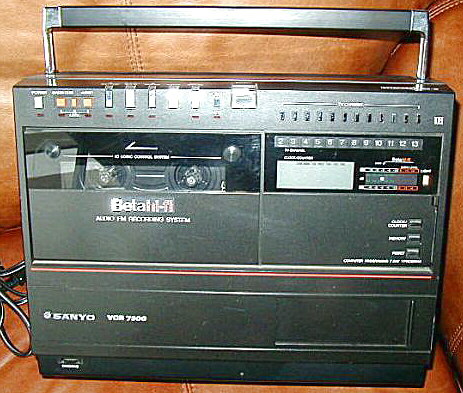
Front of
unit, with all doors closed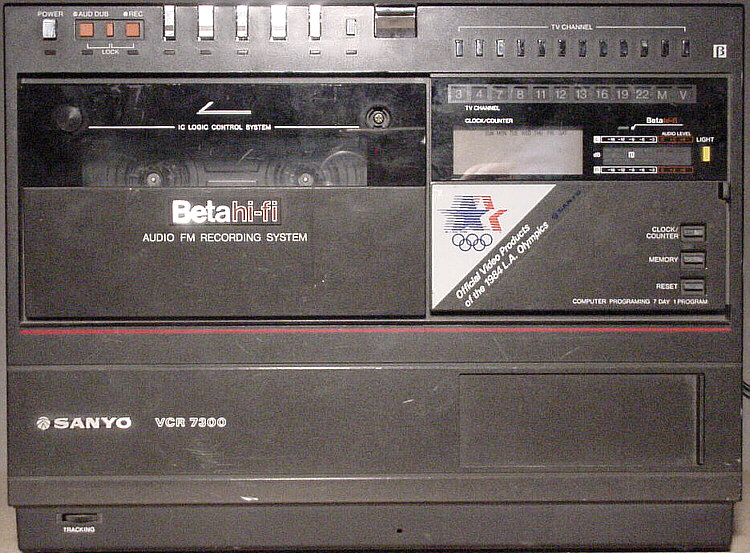
Front
of unit, with all doors open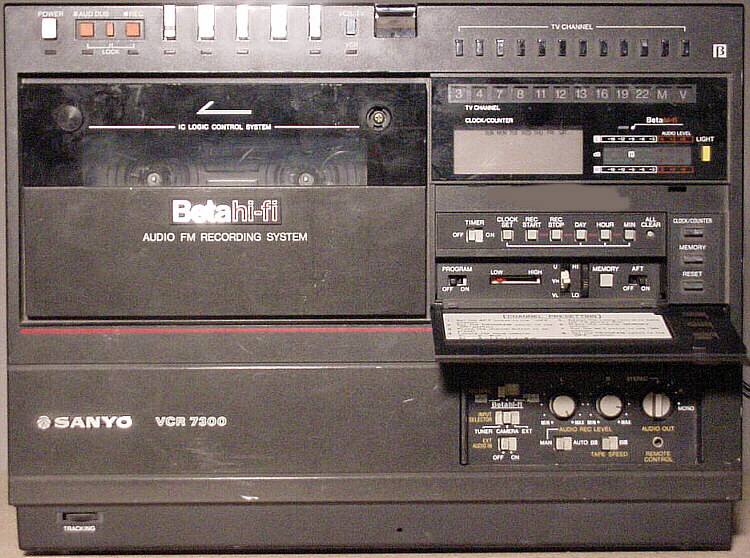
Close-Up
of Function Buttons
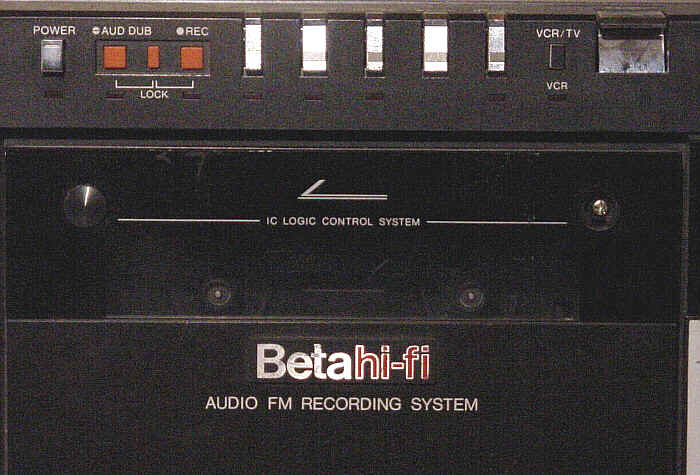
TV
Channel, Display, and Audio Meters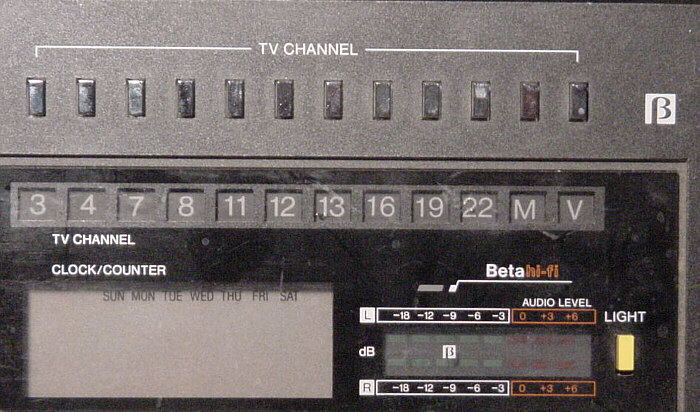
Same
shot, adding timer and tuner controls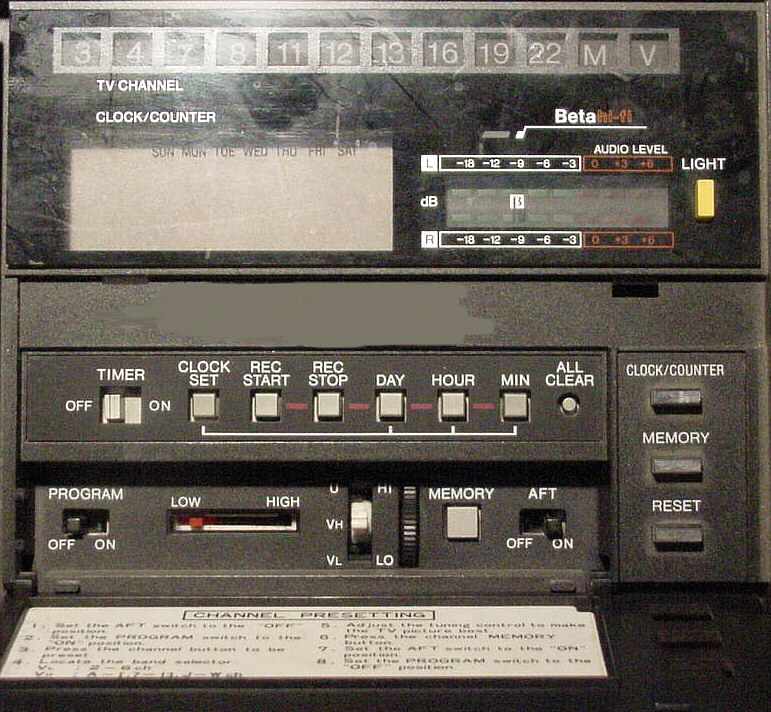
Door
covering the tuner and timer controls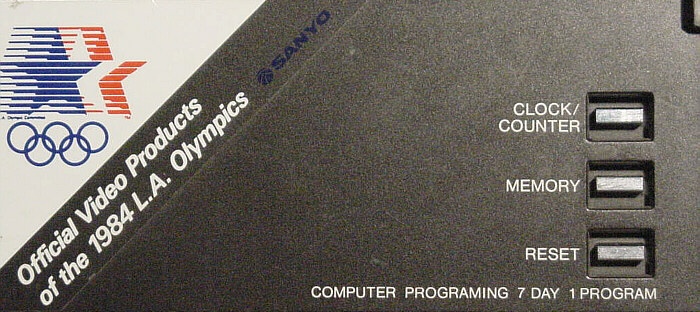
Beta Hi-Fi
Controls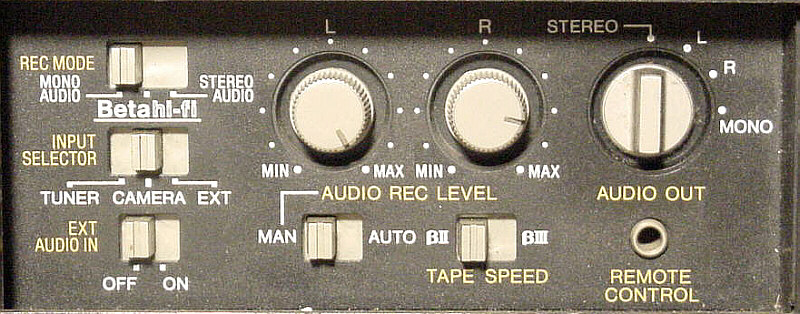
|
The Sony 860D was a middle-of-the-road SuperBeta Hi-Fi that had the tacky digital effects that wowed the VCR market in the mid 1980s, such as Strobe, Flash Motion, Picture-in-Picture, etc. Other digital units included the 810D, 840D, and 870D. |
Shot of
the front

Left
side of unit
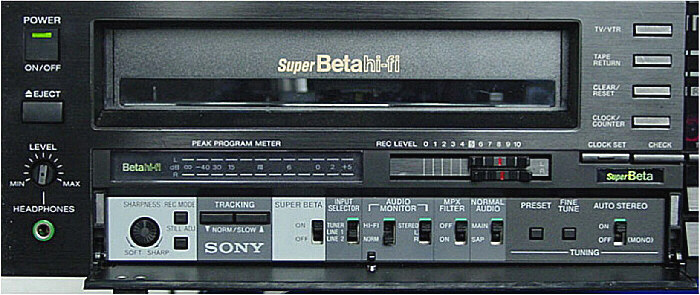
Right
side of unit
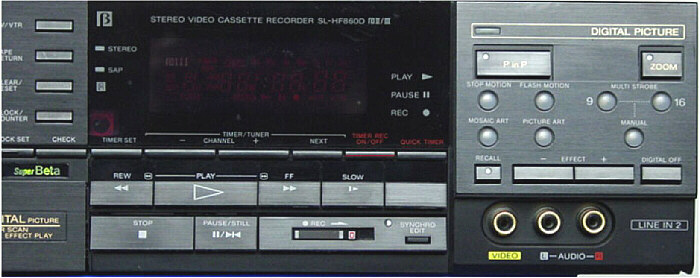
Close-up
of Digital Picture controls
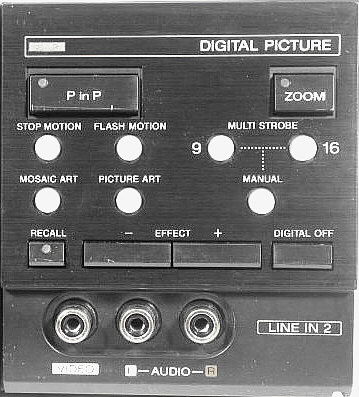
Rear

|
Perhaps the most interesting Betamax of them all!! The LV-1901 (aka LV-1901D) was released in late 1975 at a whopping $2395. It combined a 19" Sony Trinitron color TV with an SL-6200 1-hour Betamax, which recorded and played back only 1 hour tapes (when you could find them)! It had a built-in 24-hour 1-event timer (using the then-standard 1970's-style leaf clock), as well as a second TV tuner (so you watch one channel while you recorded another), and a camera input that accepted the optional black-and-white Sony camera. There are lots of pics of this unit, so please allow time for them to load! |
The LV-1901

Right-hand
side, showing Betamax and its smoked plastic cover opened
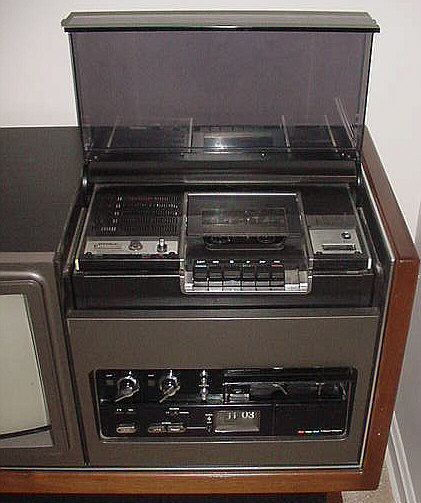
Closer
shot of the Betamax
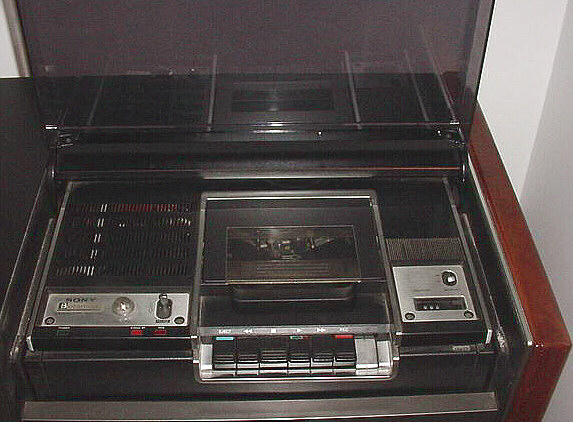
A
closer shot yet of the Betamax
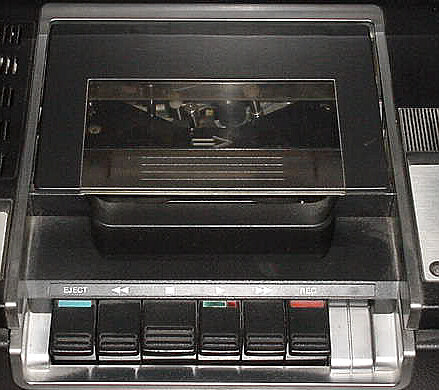
A
close-up of the left side of the Betamax, showing the Betamax logo, the tracking
knob, and the non-locking pause button. Notice also the 3 lights
at the bottom, for Power On, Standby (which came on when the tape was threading
or unthreading!), and Record.
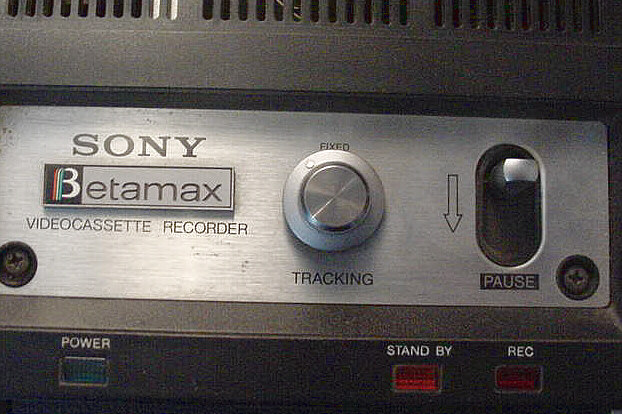
Close-up
of the right side of the Betamax, showing the Memory button and the 3-digital
counter
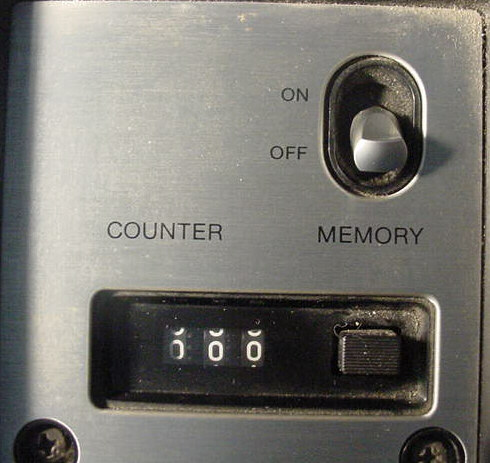
The
original, original Betamax logo!
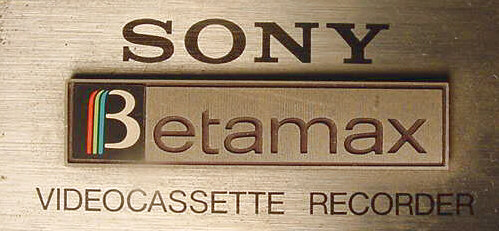
Shot of
the main tuner (UHF/VHF dials), TV Volume and Contrast controls, Playback &
Record Lamps, Source control, TV Power button, and VTR Power and Timer Buttons.
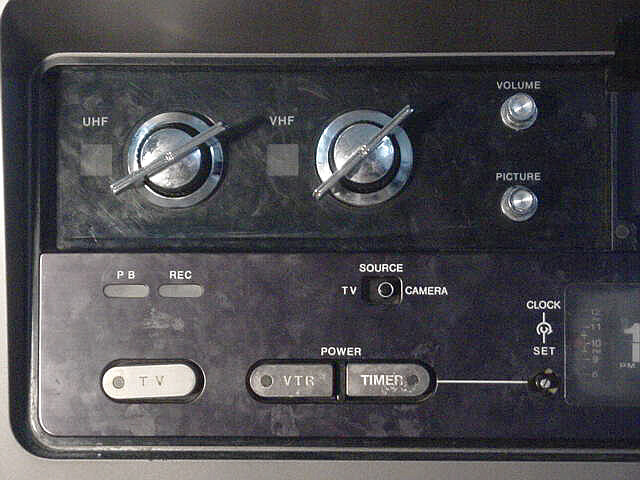
The
right-hand side of the unit, showing the secondary tuner controls, Clock Set and
Timer controls, and (behind the closed door) the TV controls. Next shot
shows the secondary tuner controls opened, and the TV controls door opened.
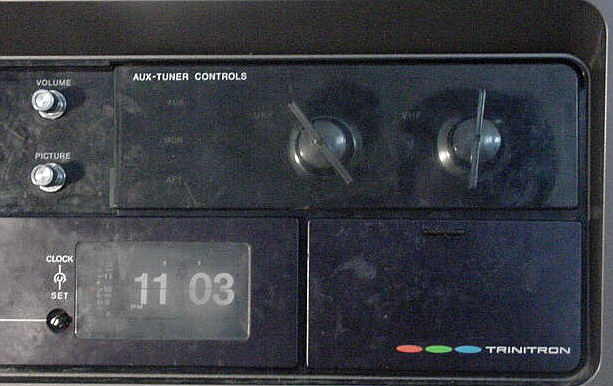
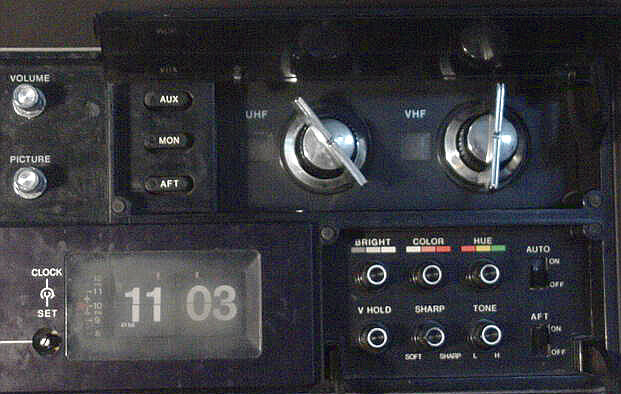
An extreme close-up of 3 controls next to the secondary tuner: AUX activates the secondary tuner, MON (MONitor) lets you momentarily watch the secondary tuner while you're recording off the primary tuner, and AFT turns on the AFT for the secondary tuner (AFT = Automatic Fine Tuning, so the station won't drift. A necessity, before the days of quartz tuning!)
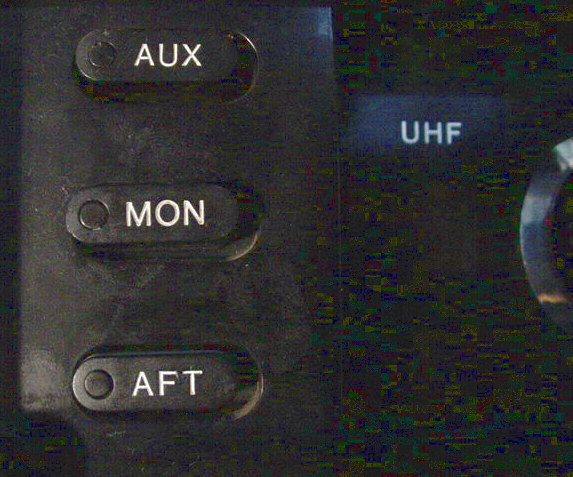
Close-up
of the TV controls; notice the Tone Control!
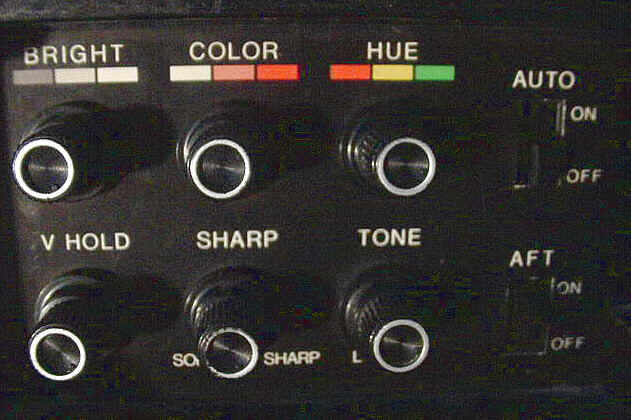
A
close-up of the Clock and Timer setting buttons. Note the vertical clock
and red pointer next to the leaf display; this was the for the timer setting, in
10-minute increments!
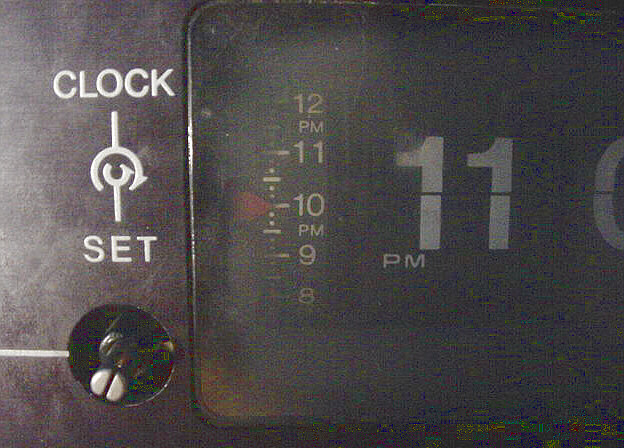
|
The 1985 Sony GCS-50 is an
all-metal, no-nonsense industrial SuperBeta editor. This unit has many
unique features: *It has Beta Hi-Fi audio AND
two-channel linear audio, yielding 4 audio channels! |

|
THE HIDDEN B-Is/BII RECORD MODE SWITCH |
|
|
Close-up of the Record Speed selector switch, which toggles between B-Is and B-II Recording. Usually there is a piece of tape covering this switch, that has to be removed. Pic courtesy of MisterBetamax.com. Used with permission.
|
|
THE HIDDEN ELAPSED HOURS METER |
|
|
Each
GCS-50 has an hours of operation meter (or mercury clock) that
displays the amount of time that has accumulated on the video heads.
It is located under the top cover in the right rear corner of the
IF-11 board (see photo below). Once these clocks run out, they
cannot be reversed. The clocks can be removed and switched end-for-end
for renewed use before they reach the point of no return, but as is
human nature this didn't take place very often in the real world. They
were usually ignored and allowed to run out. Check out the location of
the small gap on the clock in the photo at the left...it is very likely
that this unit had a real zero hours of use on its heads.
Description and photo courtesy of MisterBetamax.com. Used with permission. . 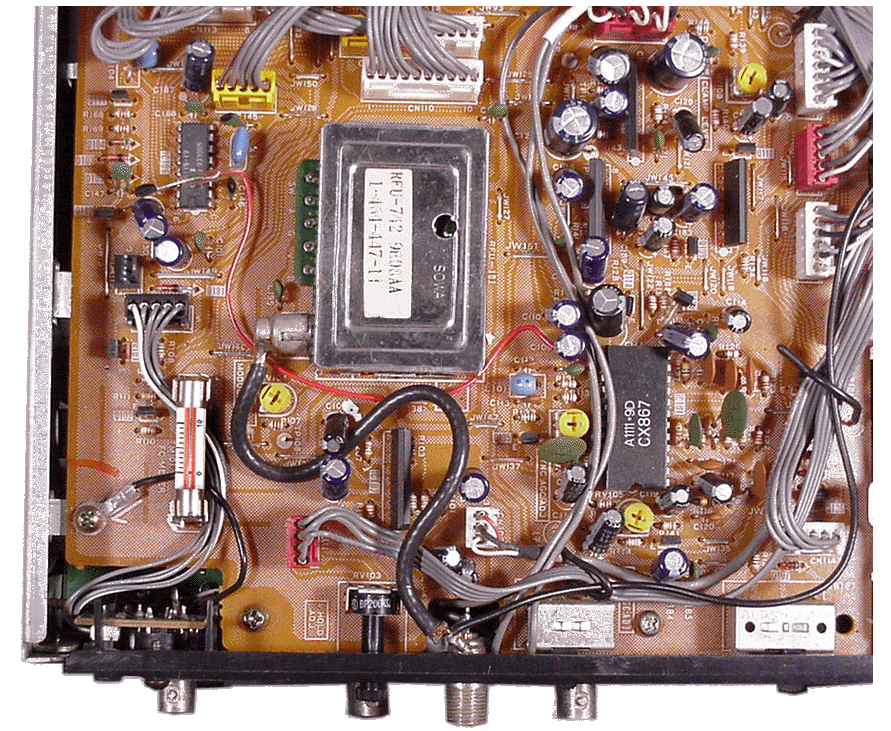
|
| CLOSE-UPS OF THE GCS-50 |
|
|
Left
side of the GCS-50 Photo courtesy of MisterBetamax.com. Used with permission. |
|
|
Center
of the GCS-50 Photo courtesy of MisterBetamax.com. Used with permission. |
|
|
The
massive locking jog/shuttle wheel. Linear audio is heard in
all slo-mo speeds! Photo courtesy of MisterBetamax.com Used with permission. |
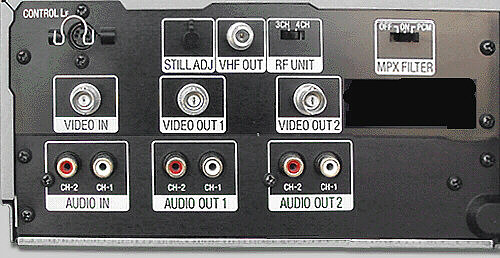 |
Rear
of the GCS-50. Note that this unit has a built-in RF unit...rare,
for an industrial Beta! Pic courtesy of MisterBetamax.com. Used with permission. |
|
SPECIFICATIONS SHEET
FOR THE GCS-50 |
|
|
|
|
|
LISTINGS
PAGES: SONY
LIST | ZENITH
LIST | NEC
LIST | TOSHIBA
LIST | SEARS
LIST |
|
PHOTO GALLERIES: SONY BETAS THRU THE YEARS | DREAM MACHINES | INDUSTRIALS INTERNATIONAL BETAS | NON-SONY BETAS | BOXES & SHELLS pg I | BOXES & SHELLS pg 2 |
|
OTHER NEAT
STUFF: BETAHELP
| THE BIG LIE
| BETAMAX
TIDBITS | BETATIPS
| BETAADS |
8-17-03